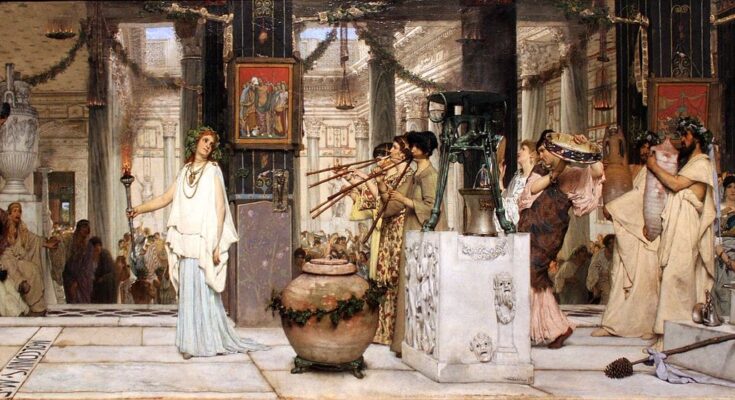In August, Athens transforms into a ghost town as locals escape the hustle and bustle of the city to return to their horio or hometown. This modern exodus contrasts sharply with the August of yesteryear when Athenians would come together to celebrate an ancient Greek festival, the Synoikia, commemorating the unification of Attica under Theseus. While today’s Athenians disperse in search of tranquility, the ancient festival was a time of gathering, unity, and collective celebration. The Synoikia was not just a festival but a powerful symbol of Athens’ identity, marking the city’s transformation from scattered communities into a cohesive state.
The Significance of the Synoikia: An Ancient Greek Festival in Athens
The term “synoecism” (synoikismos) refers to the union of smaller communities into a larger entity. According to Athenian lore, King Theseus consolidated the twelve cities of Attica into one unified state. The Synoikia, an ancient Greek festival celebrated in August, honored this achievement, emphasizing political unity and collective identity in Athens.
Athenians sacrificed to Zeus Phratrios during the festival, symbolizing brotherhood and unity. The phylobasileis, representatives of the original four Athenian tribes, organized and financed the event. Their influence diminished after Cleisthenes’ democratic reforms in 508 BC. While the Synoikia held significant meaning within Athens, evidence of its observance in other districts of Attica remains limited. This lack of evidence might result from gaps in the historical record rather than the festival’s actual reach.
Unearthing the Details of this Ancient Greek Festival in August
A fragment of a fifth-century code of sacrificial regulations, found in the Agora of Athens, provides some insight into the Synoikia. The fragment mentions a biennial festival held on the 15th and 16th days of Hecatombaion, likely corresponding to the Synoikia. Though it does not explicitly name the festival, the timing and sacrificial practices align with known details.
Interestingly, the ancient historian Thucydides did not mention a biennial cycle for this event. This omission raises questions about whether the festival was observed more frequently, possibly on a smaller scale annually. This speculation suggests that the Synoikia might have had both an annual and a biennial component, with the latter involving a more elaborate celebration.
The Evolution of the Ancient August Festival in Athens
The Synoikia gained prominence after Athens’ victory over the Persians in the First Greco-Persian War and the city’s reconstruction. As Athens rebuilt and expanded, the festival grew significantly, reflecting the city’s renewed sense of identity and purpose. Reverence for Athena, the city’s patron goddess, and Theseus, its mythological founder, became more pronounced. Their worship intertwined in new and meaningful ways.
In 374 BC, during a temporary truce in the Boeotian War, the Athenians introduced a new element to the festival: a “non-bloodshed” offering to Eirene, the goddess of peace. This addition shows how religious practices adapted to contemporary events as Athens sought to promote peace and stability during conflict.
Conclusion
From its origins as commemorating Theseus’ unification of Attica to its expansion after the Persian Wars, the Synoikia highlighted the dynamic interplay between religion and statecraft in ancient Greece. Although much about the festival remains uncertain due to the fragmentary nature of historical records, it is clear that the Synoikia was a significant event in the Athenian calendar, celebrating unity, identity, and the enduring legacy of Athens itself.



